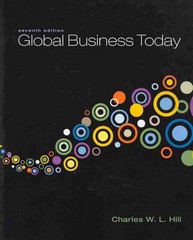Question
The following table (Roosenboom and van Dijk, 2009) shows how average share prices jump (in percentage) after the announcement that the stocks will be cross-listed.
The following table (Roosenboom and van Dijk, 2009) shows how average share prices jump (in percentage) after the announcement that the stocks will be cross-listed. The price response should be interpreted as corrected for general market movements that happened on the same day:
|
| Markets in which companies cross-listed their shares | |||
|
| US | UK | Continental Europe | Japan |
| Price response | +1.3% | +1.1% | +0.6% | +0.5% |
Although these numbers appear small, it is important to realize that announcements of domestic seasoned equity issues lead to an average negative price response of 2% to 3%.
Answer the following two questions:
1) Provide a short explanation of the average negative price response to domestic seasoned equity issuance.
2) Given the positive price response to cross listing, why doesn't every company cross-list?
Step by Step Solution
There are 3 Steps involved in it
Step: 1

Get Instant Access to Expert-Tailored Solutions
See step-by-step solutions with expert insights and AI powered tools for academic success
Step: 2

Step: 3

Ace Your Homework with AI
Get the answers you need in no time with our AI-driven, step-by-step assistance
Get Started


